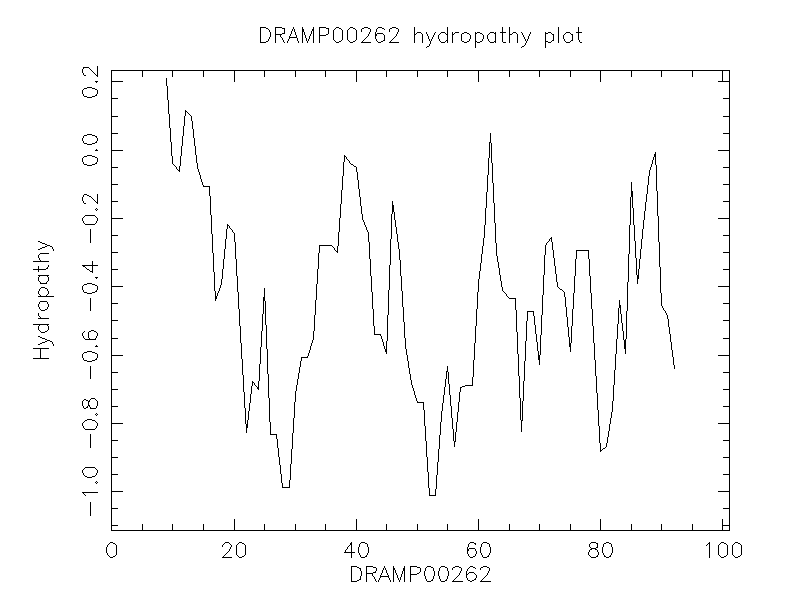General Information
-
DRAMP ID
- DRAMP00262
-
Peptide Name
- Cyanovirin-N (CV-N)
-
Source
- Nostoc ellipsosporum (cyanobacterium)
-
Family
- Belongs to the cyanovirin-N family
-
Gene
- Not found
-
Sequence
- LGKFSQTCYNSAIQGSVLTSTCERTNGGYNTSSIDLNSVIENVDGSLKWQPSNFIETCRNTQLAGSSELAAECKTRAQQFVSTKINLDDHIANIDGTLKYE
-
Sequence Length
- 101
-
UniProt Entry
- P81180
-
Protein Existence
- Protein level
Activity Information
-
Biological Activity
- Antimicrobial, Antiviral
-
Target Organism
- No MICs found in DRAMP database
-
Hemolytic Activity
-
- No hemolysis information or data found in the reference(s) presented in this entry
-
Cytotoxicity
-
- Not included yet
-
Binding Target
- Not found
Structure Information
-
Linear/Cyclic
- Not included yet
-
N-terminal Modification
- Not included yet
-
C-terminal Modification
- Not included yet
-
Nonterminal Modifications and Unusual Amino Acids
- Not included yet
-
Stereochemistry
- Not included yet
-
Structure
- Combine helix and strand structure
-
Structure Description
- Not found
-
Helical Wheel Diagram
-
PDB ID
- 2EZM resolved by NMR.
-
Predicted Structure
- There is no predicted structure for DRAMP00262.
Physicochemical Information
-
Formula
- C470H747N133O164S4
Absent Amino Acids
- M
Common Amino Acids
- ST
Mass
- 11013.13
PI
- 4.94
Basic Residues
- 9
Acidic Residues
- 11
Hydrophobic Residues
- 29
Net Charge
- -2
-
Boman Index
- -197.76
Hydrophobicity
- -0.447
Aliphatic Index
- 75.35
Half Life
-
- Mammalian:5.5 hour
- Yeast:3 min
- E.coli:2 min
Extinction Coefficient Cystines
- 10220
Absorbance 280nm
- 102.2
Polar Residues
- 45
DRAMP00262

Comments Information
Function
- Mannose-binding lectin.
Biotechnological use
- Overexpression of this protein to provide quantities adequate for medical use as a topical microbiocide has been attempted in a number of systems including E.coli, Lactobacillus jensenii, the yeast Pichia pastoris and Nicotiana tabacum. One fusion construct for overexpression of this protein can be found in entry AC D1WFZ2.
Miscellaneous
- Its activity in situ is Not found, however it acts as a viral entry inhibitor, inhibiting HIV-1, HIV-2 and simian immunodeficiency virus (and some other viruses such as feline immunodeficiency virus, measles virus and human herpesvirus) infection and replication. It prevents essential interactions between the envelope glycoprotein and target cell receptors by binding to carbohydrates on viral protein gp120 and possibly by other mechanisms as well. Addition to cells must occur before or shortly after virus addition. It also inhibits cell-to-cell fusion, and virus-to-cell and cell-to-cell transmission of a viral infection. Is remarkably stabile; the protein can withstand multiple freeze-thaw cycles, dissolution in organic solvents, treatment with salt, detergent, H2O2 and boiling without significant loss of anti-HIV activity.
Literature Information
- ·Literature 1
-
Title
- Discovery of cyanovirin-N, a novel human immunodeficiency virus-inactivating protein that binds viral surface envelope glycoprotein gp120: potential applications to microbicide development.
-
Pubmed ID
- 9210678
-
Reference
- Antimicrob Agents Chemother. 1997 Jul;41(7):1521-1530.
-
Author
- Boyd MR, Gustafson KR, McMahon JB, Shoemaker RH, O'Keefe BR, Mori T, Gulakowski RJ, Wu L, Rivera MI, Laurencot CM, Currens MJ, Cardellina JH 2nd, Buckheit RW Jr, Nara PL, Pannell LK, Sowder RC 2nd, Henderson LE.
- ·Literature 2
-
Title
- Solution structure of cyanovirin-N, a potent HIV-inactivating protein.
-
Pubmed ID
- 9665171
-
Reference
- Nat Struct Biol. 1998 Jul;5(7):571-578.
-
Author
- Bewley CA, Gustafson KR, Boyd MR, Covell DG, Bax A, Clore GM, Gronenborn AM.

